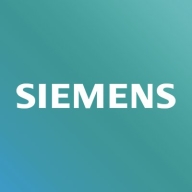

IBM DOORS and Polarion Requirements compete as requirements management tools. Polarion is preferred for its user-friendliness and adaptability, while IBM DOORS is valued for its customization capabilities.
Features: IBM DOORS offers strong customization through DXL scripting, supports traceability, and provides robust integration. It's suitable for large-scale analyses and a broad range of tool integrations. Polarion Requirements excels in document management and collaboration, integrates well with tools like Teamcenter and Jira, and enhances workflows with electronic signatures.
Room for Improvement: IBM DOORS could benefit from a more intuitive interface and improved real-time collaboration. Polarion Requirements could enhance bulk editing, offer a better user experience, and improve document review processes.
Ease of Deployment and Customer Service: IBM DOORS is mainly on-premises with mixed support reviews, although improvements have been noted. Polarion Requirements offers flexible deployment including cloud options and is praised for responsive customer service.
Pricing and ROI: IBM DOORS is expensive, justifying costs for large projects with significant ROI. Polarion Requirements, though also costly, offers flexible licensing, appealing for varied organizational roles.


IBM Engineering Requirements Management DOORS (DOORS) is a Requirements Management (RM) software designed to help organizations manage engineering project requirements throughout the development lifecycle. It provides a central location for capturing, defining, and organizing project requirements, facilitating communication and collaboration among stakeholders like engineers, system designers, and customers. Key features include requirements traceability, version control, and impact analysis, ensuring effective implementation and testing. DOORS improves efficiency, enhances communication, reduces risks, and supports better decision-making through clear visibility into requirements. Compared to its newer, web-based counterpart DOORS Next, the mature DOORS 9 offers a wider range of features with a traditional user interface but lacks web-based functionality and modern integration with IBM Engineering Lifecycle Management (ELM) tools.
We monitor all Application Requirements Management reviews to prevent fraudulent reviews and keep review quality high. We do not post reviews by company employees or direct competitors. We validate each review for authenticity via cross-reference with LinkedIn, and personal follow-up with the reviewer when necessary.